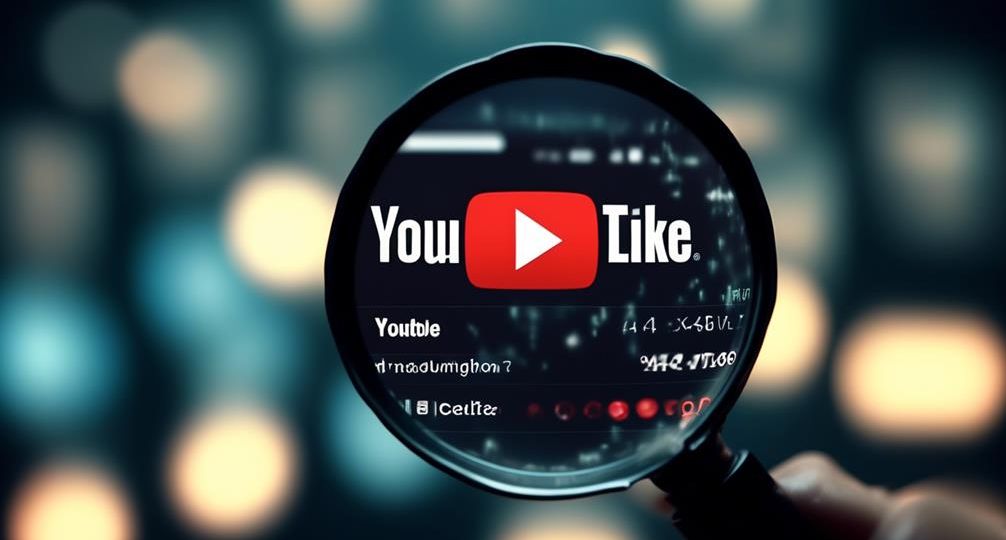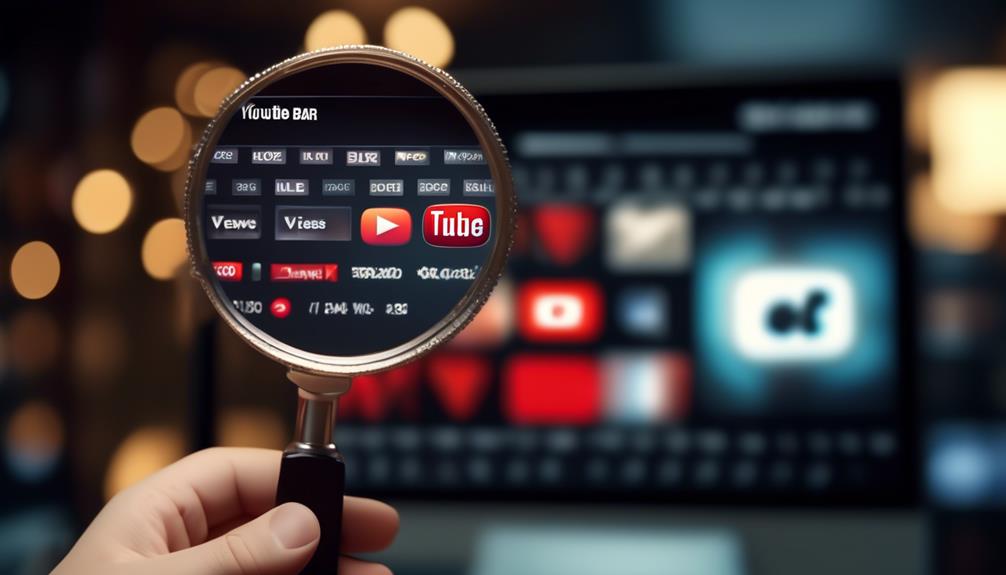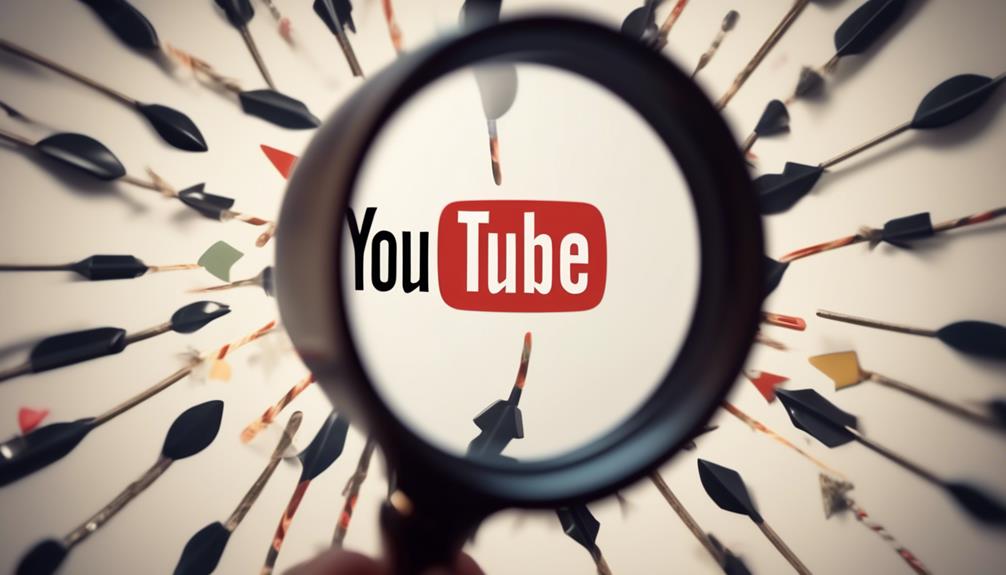
How can you tell if someone is buying likes on YouTube?
As the old saying goes, ‘not everything that glitters is gold.’ This is particularly true in the digital world of YouTube, where authenticity may not always align with what you see on the surface.
You’ve likely heard of the practice of buying likes, a method some users employ to artificially boost their perceived popularity. But how can you discern the genuine from the counterfeit? It’s not always as straightforward as you might think, and requires careful attention to certain indicators.
Let’s explore this engaging topic further, shall we?
Key Takeaways
- The sudden spike in likes without a corresponding increase in views or comments is a red flag indicating potential artificial likes.
- Large numbers of likes appearing soon after a video is posted may suggest automated liking and potentially fake accounts.
- Analyzing the like-to-view ratio provides insights into a video’s popularity, and sudden unexplained spikes in likes could indicate fake likes.
Understanding YouTube’s Like System

Often, you’ll find the ‘like’ button under every YouTube video, a simple yet powerful tool that plays a crucial role in the platform’s algorithm and user engagement. This seemingly trivial feature can significantly influence the Algorithm Influence, essentially determining the visibility and reach of a video.
The ‘like’ button acts as a form of social proof, validating the Video Quality Impact and its perceived worth. The more likes a video has, the more credible it appears to new viewers. But it’s not just about appearances. The YouTube algorithm takes these likes into account when deciding which videos to promote and which to bury.
You’ll also notice that a video with a high like-to-dislike ratio often appears more frequently in suggested video lists, boosting its reach. Conversely, videos with more dislikes may struggle to gain traction, even if the content is top-notch. This is where the quality of the video comes into play.
When you’re creating content, you’re not just making a video. You’re interfacing with a complex system designed to gauge user response and adjust promotion accordingly. Understanding the ‘like’ system can give you a significant edge in navigating this digital landscape.
Sudden Spike in Likes
You’ve probably noticed unusual like patterns on some YouTube videos, such as a sudden spike in likes.
It’s crucial to understand this isn’t typical, especially when the like-to-view ratio doesn’t add up.
Let’s explore what these anomalies could mean and how they can impact the perception of a video’s popularity.
Analyzing Unusual Like Patterns
When you notice a sudden surge in YouTube likes, it’s critical to delve into these unusual patterns, as they could potentially indicate the purchase of artificial likes. You need to employ fake engagement detection strategies and conduct a thorough profile analysis.
Here’s what you need to look out for:
- Inconsistencies: A sudden spike in likes without a corresponding increase in views or comments is a red flag.
- Emotion: Surprise at the disjointed statistics.
- Timing: A large number of likes appearing shortly after a video is posted may suggest automated liking.
- Emotion: Suspicion towards the unrealistic speed of engagement.
- User profiles: Fake accounts often lack profile pictures, have few followers, or exhibit unusual activity.
- Emotion: Bewilderment at the odd user behavior.
Stay vigilant, always question, and keep your platform authentic.
Understanding Like-to-View Ratio
Analyzing the like-to-view ratio on your YouTube videos can provide valuable insights, especially if there’s a sudden, unexplained spike in likes. This could indicate view count discrepancies and warrant an audience behavior analysis.
Consider this scenario: your video has 1,000 views but suddenly receives 500 likes overnight. It’s unusual, as the average like-to-view ratio is around 4%. A sudden spike might suggest fake likes. Here’s a helpful table:
| Average Ratio | Sudden Spike |
|---|---|
| 4% | 50% |
Compare your metrics with the average and investigate any significant variations. By staying vigilant, you can maintain the integrity of your YouTube presence and ensure a genuine connection with your audience.
Understanding the like-to-view ratio is a key aspect of innovative audience analysis.
Disproportionate Like-to-View Ratio

In the realm of YouTube metrics, a disproportionate like-to-view ratio can serve as a clear red flag for artificially inflated engagement. You see, algorithm manipulation and artificial boosting can skew this ratio, making it seem like a video is more popular than it truly is.
Here’s the thing, if a video has a relatively small number of views but a high number of likes, that’s a clear sign of foul play. It’s basically like trying to fit a square peg into a round hole; it just doesn’t add up.
To evoke emotion, consider the following:
- The Deception:
It’s disheartening to think that the authenticity of engagement can be compromised.
- The Implication:
Artificial boosting can manipulate your perception of a video’s popularity.
- The Consequence:
Trust in the platform can be eroded, which affects everyone in the YouTube community.
Inconsistent Engagement Metrics
Diving into the nitty-gritty of ‘Inconsistent Engagement Metrics’, you’ll find that it’s another telltale sign of artificial boosting on YouTube. When scrutinizing a channel’s engagement, it’s crucial to look for consistency. An authentic audience typically interacts in a balanced and predictable manner.
For instance, if a video has a high view count but low comment activity, there’s a good chance that the views aren’t genuine. Similarly, if a post has an unusually high number of likes but only a few shares, it might indicate that likes were purchased.
Engagement authenticity is a key metric in social media algorithms. These algorithms are designed to detect and penalize artificially inflated engagement metrics. If a channel’s engagement doesn’t align with expected patterns, it’s likely that the algorithms will deem it suspicious.
In the innovative realm of social media, data doesn’t lie. Be vigilant. Track engagement metrics over time, looking for disparities and inconsistencies. You’ll soon get a sense of what’s genuine and what’s not.
Suspicious User Interaction Patterns

Peeling back the layers of user interaction on YouTube, you’ll quickly notice that suspicious patterns often emerge when likes are bought. These patterns can be subtle, but with a keen eye, you can spot them. One of the most telling signs is inconsistent comment trends. When likes are bought, comments often don’t match the positive sentiment of the likes, or they may be suspiciously absent altogether.
Viewer demographics can also be revealing. For instance, if a channel’s likes are mostly from regions that don’t align with the content’s language or targeted audience, it’s a red flag.
To evoke emotion, consider these points:
- The disappointment when you realize a favorite YouTuber might be buying likes.
- The shock of discovering how widespread this practice is.
- The satisfaction of being well-informed and able to spot these patterns.
Investigating the Source of Likes
After spotting these suspicious patterns, you’ll likely want to dig deeper to understand where these likes are actually coming from. Isolating the sources of these likes can be a complex task, requiring a level of tech-savviness and analytical thinking.
One prevalent method employed to inflate likes on YouTube is click farming. This unethical practice involves utilizing a large number of individuals or automated bots to repeatedly click on a video, artificially boosting its popularity. The implications of click farming are vast, leading to skewed analytics and misinformation about genuine audience engagement.
Let’s not overlook the ethics of social media. Authenticity and transparency should be the bedrock of any online interaction. Buying likes contravenes these principles, manipulating perceptions and creating a false sense of popularity.
The investigation of likes sources isn’t just about spotting anomalies, it’s about preserving the integrity of social media. By being vigilant and investigative, you’re not just ensuring fair play, you’re also helping to uphold ethical standards in the digital space.

